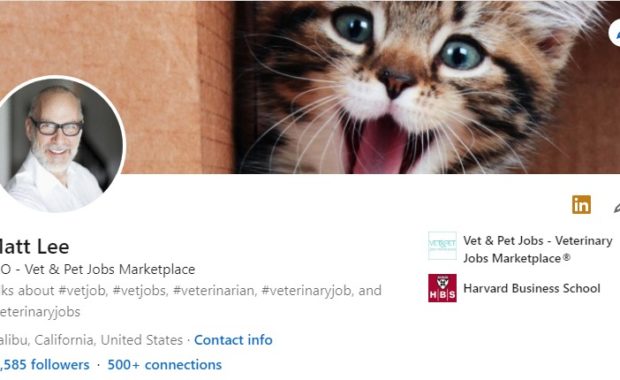With an increasing number of pets and amplified demand for high-quality pet care, veterinary teams are feeling the pressure more than ever before. As a competent locum relief veterinary professional, every day you are more welcome than a bowl of ice cream at a children’s birthday party! Read on to discover the top five benefits of locum relief veterinary work, plus our practical tips for expanding your career into the locum relief space, be it full-time or occasionally…
5 Years as a Vet…now what?
As you approach five years into your career as a veterinarian, it’s time to step back and do some reflection. Take a few moments to carefully consider what you have learned, how your job has impacted your worldview, and how you’ve managed to balance your work responsibilities with social or family obligations. You probably don’t need to be convinced of the importance of self-evaluation. After all, you have been pushing yourself since your pre-vet days. Even as a practicing veterinarian, you likely work hard to keep up with evolving technology and techniques. You may put in long and irregular hours, either at the clinic or at home with your nose in reference books and veterinary journals, all in the continued quest for personal and professional development. Five years into your career, you’ve earned your chops and gained confidence in your work. Now it’s time to take a step back and take a big-picture view. What’s ahead for your career? What are your goals in your personal life? Where do you see yourself five years from now?
5 Essential Skills for Locum Relief Veterinary Professionals
Locum relief veterinarians are valuable assets to clinics who need a little extra support or want to make sure their patients have access to quality care while they are away from the clinic. Locum veterinary professionals need the same foundational skills as any other veterinarian; however, there are certain attributes and skills locum veterinarians should be particularly good at. A great veterinarian may not make a great locum veterinarian, so what exactly does it take to be successful? There are certainly more than these 5, but if you have a good handle on these, any clinic would be happy to have you pitching in to support their team…
Why Don’t Veterinary Recruitment Agencies Publish Their Fees?
In today’s business environment, so many veterinary practices are running short-staffed and it is becoming increasingly challenging for veterinary hospitals to attract qualified veterinarians, veterinary technicians, and veterinary support staff to available job openings. In an effort to increase their applicant pool, some practices consider turning to a veterinary recruitment agency or “head hunter.” One of your first questions when considering appointing a recruitment agency is probably a simple one: how much does a recruiter charge? Unfortunately, finding transparent information on the fees associated with veterinary recruiting can be a challenge. Veterinary recruitment firms seldom publish their fees publicly, so uncovering this information requires a bit of sleuthing. This lack of transparency creates uncertainty and chews up your valuable time… time that you would probably rather spend seeing patients, or getting a head start on your search for employees. Is hiring a recruitment agency the right choice for your practice? And, if so, how much does it cost? Find the answers here…
How to Polish Your LinkedIn Profile
Like Liam Neeson in Taken, you have a very particular set of skills, acquired over your career, but unlike Liam, your skills make you a joy for employers and recruiters. But when they look for you on LinkedIn, as 77 per cent of recruiters and employers do, you want them to find you and be impressed enough to reach out and connect. And when they do find you (and they will if you follow this advice), they will employ you. Apply these tips and you will be well on the way to your initial interview…
Veterinary professionals all Love a great Story, learn Why and How
In this era of unusual demand and supply for Veterinary team members, if you want the best then it’s time to become a great storyteller. We’re not talking about fibs, stretching the truth or outright lies. What we do mean is that in a market where demand clearly is outstripping supply (at a ratio of more than 1:1) Veterinarians, Veterinary Technicians, Veterinary Nurses and just about all Veterinary Professionals are being highly selective about choosing their next career step…and it starts with your Message. You have just a few seconds…That’s it. In today’s attention-span-challenged world, if your Job Campaign does not attract, engage and draw readers or viewers into your story in the first few seconds then your audience will just move on…and, having captured their attention, you must keep their interest right to the very end. As for you Job Seekers, knowing your potential new employer’s compelling story is essential to making the right decision. Both of you will find out why and how here…
Veterinarian Salary Survey Results – July 2021
Our Veterinarian Salary Survey is prepared twice yearly in January and July and is assembled from a range of publicly available sources together with our own data so as to provide a broad guide to employees and employers as to the overall market and any variance in half-yearly as well as yearly trends. Here are the outcomes and variances for the January to June 2021 half-year, some to be expected but also some interesting surprises…
Nailing your first Veterinary Job in Challenging Times: 6 Key Tactics
You have successfully completed your studies and practical skills placements, and gained your Degree or Certification and you are actively networking and applying, and with good interest being shown…but even though there is a recognized shortage of veterinary professionals across all levels, despite popular opinion, you need more than a pulse, a degree and state registration to get your first veterinary job. And then there is a global pandemic causing all kinds of uncertainty. Finding a practice to put your newly acquired skills to work in an entry-level role has always been a challenge, and now even more so, so here are six proven tactics to help you secure your first job as a brand new Veterinarian, Vet Tech or Veterinary Nurse in these challenging times…
Love to Learn, Learn to Live – 5 Ways To Stay Ahead of the CE Curve
Before you know it, you’ll be 5 years post-matriculation from veterinary school or veterinary nursing school. Then 10 years. Then 15 years. It flies by! And with that rapid passage of time comes change. New drugs. New parasiticides. New diseases (we didn’t learn about feline pancreatitis when I went to vet school!). New surgical methods and techniques. You have to not only just keep up with these innovations and protocols, you have to get ahead of them in order to deliver best practice Veterinary Medicine. You need to love to learn and learn to live, so here are 5 great ways to get ahead, and stay ahead, of the Veterinary Continuing Education learning curve…










